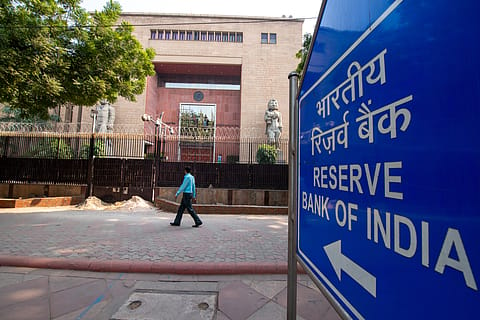Scrap 14-day liquidity window, switch to 7-day repo operations, proposes RBI panel
VRR/VRRR is a monetary policy instrument RBI introduced in February 2020, around the time the pandemic hit, to control the liquidity in the banking system

The Reserve Bank of India (RBI) may soon discontinue its long-standing 14-day Variable Rate Repo/Variable Rate Reverse Repo (VRR/VRRR) auctions as the primary tool for liquidity management Framework (LMF) to enhance efficiency, predictability, and policy transmission in the financial markets.
The recommendation, made in the report by the Internal Working Group’s review of LMF, stated that “14-day VRR/VRRR auctions may be discontinued as the main operation. Instead, the transient liquidity may be managed primarily through seven-day repo/reverse repo operations and other operations of tenors from overnight up to 14 days at the discretion of the Reserve Bank based on its assessment of the system liquidity requirement."
VRR/VRRR is a monetary policy instrument RBI introduced in February 2020, around the time the pandemic hit, to control the liquidity in the banking system owing to uncertain and exceptional circumstances. It involved the central bank borrowing money from commercial banks for a variable duration at a variable interest rate determined through auctions.
“As the report has observed, these instruments are now not being fully used by banks in the absence of the required data. The 7-day repo/reverse repo is expected to be a better choice for more efficient handling of the situation,” said Jyoti Prakash Gadia, managing director at Resurgent India.
Under the existing LMF, the 14-day operations experienced decreased participation from banks, especially during reverse repo auctions. Although they hold surplus liquidity, many banks prefer to use the Standing Deposit Facility (SDF) daily, despite its lower return.
According to the report, an empirical analysis indicates that although repo operations across various tenors were generally oversubscribed, there was a widespread reluctance among banks to part with their surplus liquidity in 14-day main reverse repo operations, with a preference for utilising the SDF facility daily.
The report also noted that the liquidity position for the entire fortnight results in their lower participation in 14-day main operations, thus undermining the efficacy of these operations in managing transient liquidity.
Recommended Stories
“Such intra-fortnight variations in system liquidity can be better managed through shorter tenor operations, rather than 14-day operations. Furthermore, the choice of tenor of operations should ensure the optimal level,” the report highlighted.
This way, by using shorter tenor tools like 7-day repos and reverse repos, RBI could manage liquidity more effectively without forcing banks into long-term commitments that they may be unable or unwilling to forecast accurately. “The report has rightly recommended flexibility to be given to RBI to decide the period…depending upon the actual liquidity situation for usage of short-term instruments,” Gadia added.
The proposal has not yet been accepted as official policy. Still, if implemented, it would mark the second operational shift in the central bank’s liquidity management toolkit, as it had recently ended the daily VRR auctions.